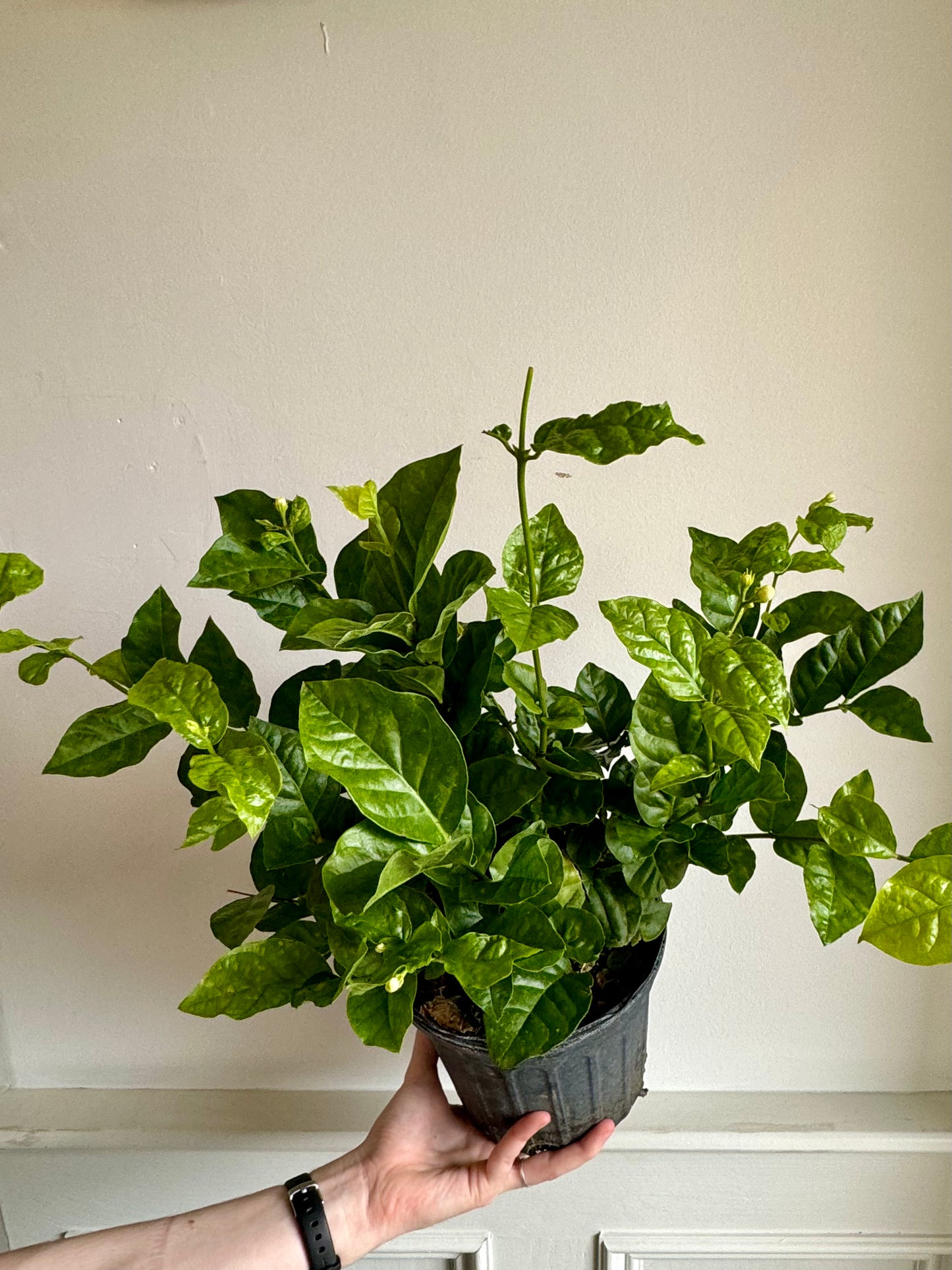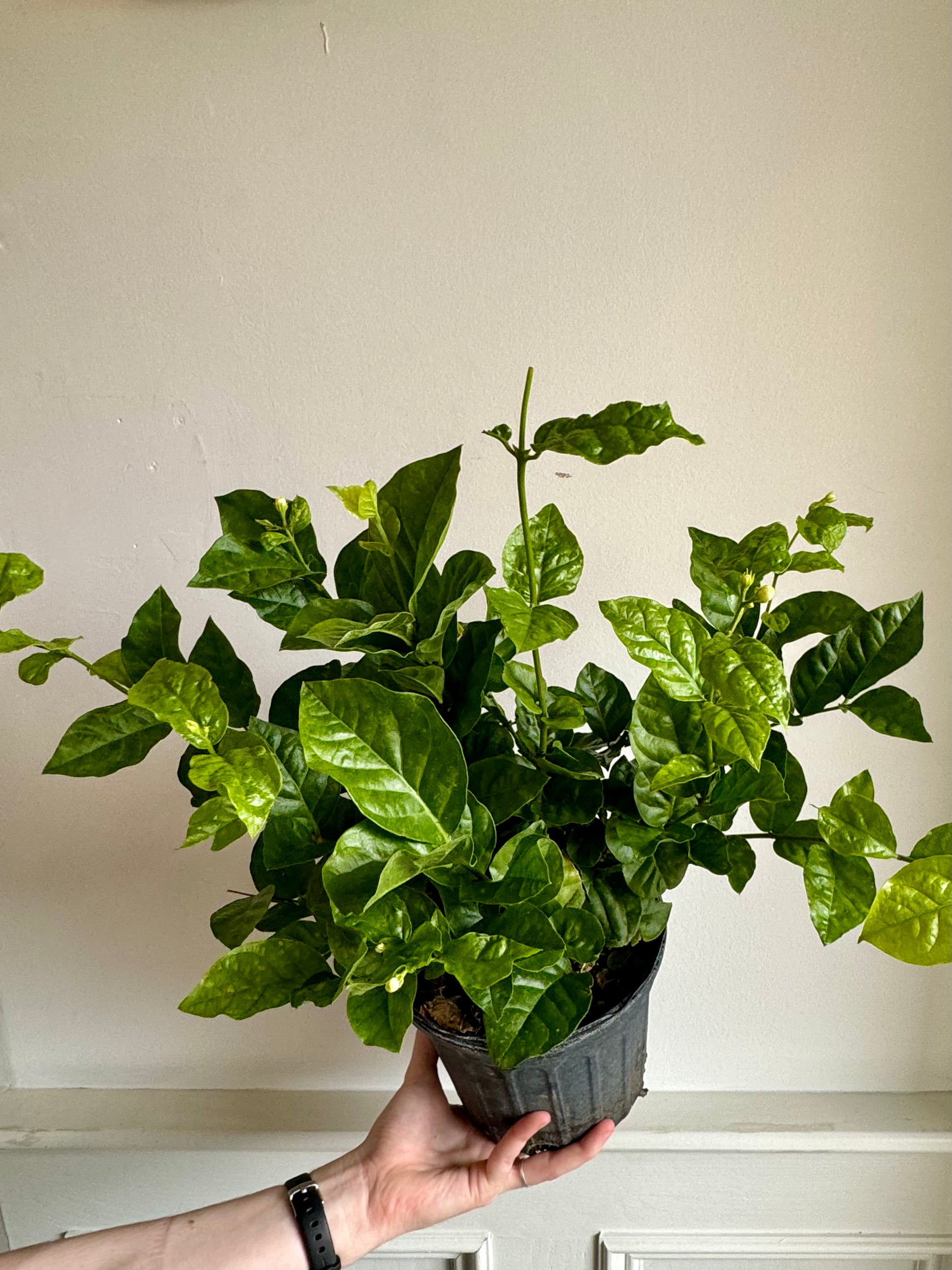Jasmine Sambac
Jasmine Sambac
Couldn't load pickup availability
Jasmine sambac, also known as Arabian jasmine, is a species of jasmine native to Southeast Asia, particularly in India and surrounding regions. It is prized for its fragrant flowers and is widely cultivated for ornamental, medicinal, and religious purposes. Here's some information about jasmine sambac:
-
Appearance: Jasmine sambac is an evergreen shrub or vine with glossy, dark green leaves and waxy, white flowers. The flowers are small, star-shaped, and intensely fragrant, with a sweet, floral scent that intensifies at night. There are also cultivars with pink or yellow-tinged flowers. Jasmine sambac blooms profusely, often producing flowers year-round in warm climates.
-
Cultivation: Jasmine sambac is relatively easy to grow and can be cultivated as a shrub, vine, or container plant. It prefers well-draining soil with a slightly acidic to neutral pH and thrives in full sun to partial shade. In cooler climates, it can be grown indoors in containers and placed near a sunny window. Regular pruning helps maintain the plant's shape and encourage flowering.
-
Watering: Jasmine sambac prefers consistently moist but not waterlogged soil. Water the plant regularly, especially during periods of active growth and flowering. Allow the top inch of soil to dry out slightly between waterings, but avoid letting the soil dry out completely. Reduce watering in winter when the plant's growth slows down.
-
Temperature: Jasmine sambac thrives in warm temperatures ranging from 65°F to 85°F (18°C to 29°C). It is not cold-hardy and should be protected from frost and freezing temperatures. In cooler climates, it can be grown in containers and brought indoors during the winter months.
-
Fertilization: Feed jasmine sambac with a balanced, water-soluble fertilizer diluted to half-strength every two to four weeks during the growing season (spring and summer). Reduce or eliminate fertilization in fall and winter when the plant's growth slows down.
-
Pruning: Prune jasmine sambac regularly to maintain its shape and encourage branching and flowering. Remove dead or diseased branches, as well as any overgrown or straggly growth. Pruning after flowering helps promote new growth and flowering.
Share


